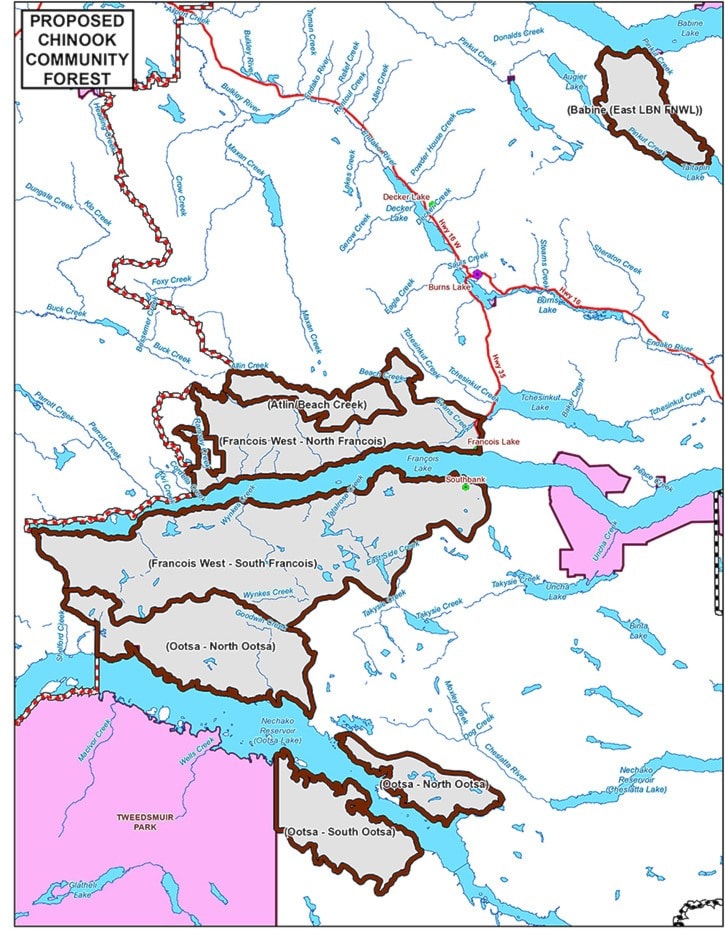With its forest stewardship plan (FSP) approved and some of its cutting permits in place, Burns Lake’s newest community forest, the Chinook Community Forest, has received the green light to start harvesting.
According to Ken Nielson, Chinook’s president, harvesting could being as soon as this week.
“Chinook has received its first permits since the FSP approval and will continue to apply for cutting permits this operational season,” explained Daniella Oake, Chinook’s board member.
Last month, Chinook’s board of directors held a meeting with the district manager of the Nadina Forest District in Burns Lake to discuss the delay in Chinook’s FSP approval. The FSP was approved a few days after the meeting.
Some community leaders have said the process to start harvesting at Chinook has been slow and that they are relieved to finally see it happening.
“It’s a good and slow start, but worth the effort as it’s needed for the area,” said Lake Babine Nation Chief Adam.
Greig Bethel, a spokesperson with the B.C. Ministry of Forests, said it’s not surprising that this process would take so long, considering that there were two local governments and six First Nations groups involved. In addition to the proposed community forest, areas for First Nations’ woodland licenses also needed to be identified.
The two local governments involved in the community forest are the Village of Burns Lake and the Regional District of Bulkley-Nechako. The six local First Nations groups include the Burns Lake Band, Lake Babine Nation, Cheslatta Carrier Nation, Wet’suwet’en First Nation, Skin Tyee Nation and Nee Tahi Buhn First Nation.
The new community forest started when stakeholders at Hampton Affiliates were deciding whether or not to move forward with the rebuilding of the Babine Forest Products sawmill after the 2012 explosion. One of the main concerns back then was the amount of timber available to supply the mill. The stakeholders stated that, to justify a rebuild, enough timber in the Lakes timber supply area needed to be available. The need for enough timber to supply the mill led local officials to propose to the provincial government that a second community forest be added to the area.
The Chinook Community Forest will run with the same legal structure as the Burns Lake Community Forest and an annual allowable cut of 150,000 cubic metres per year.
